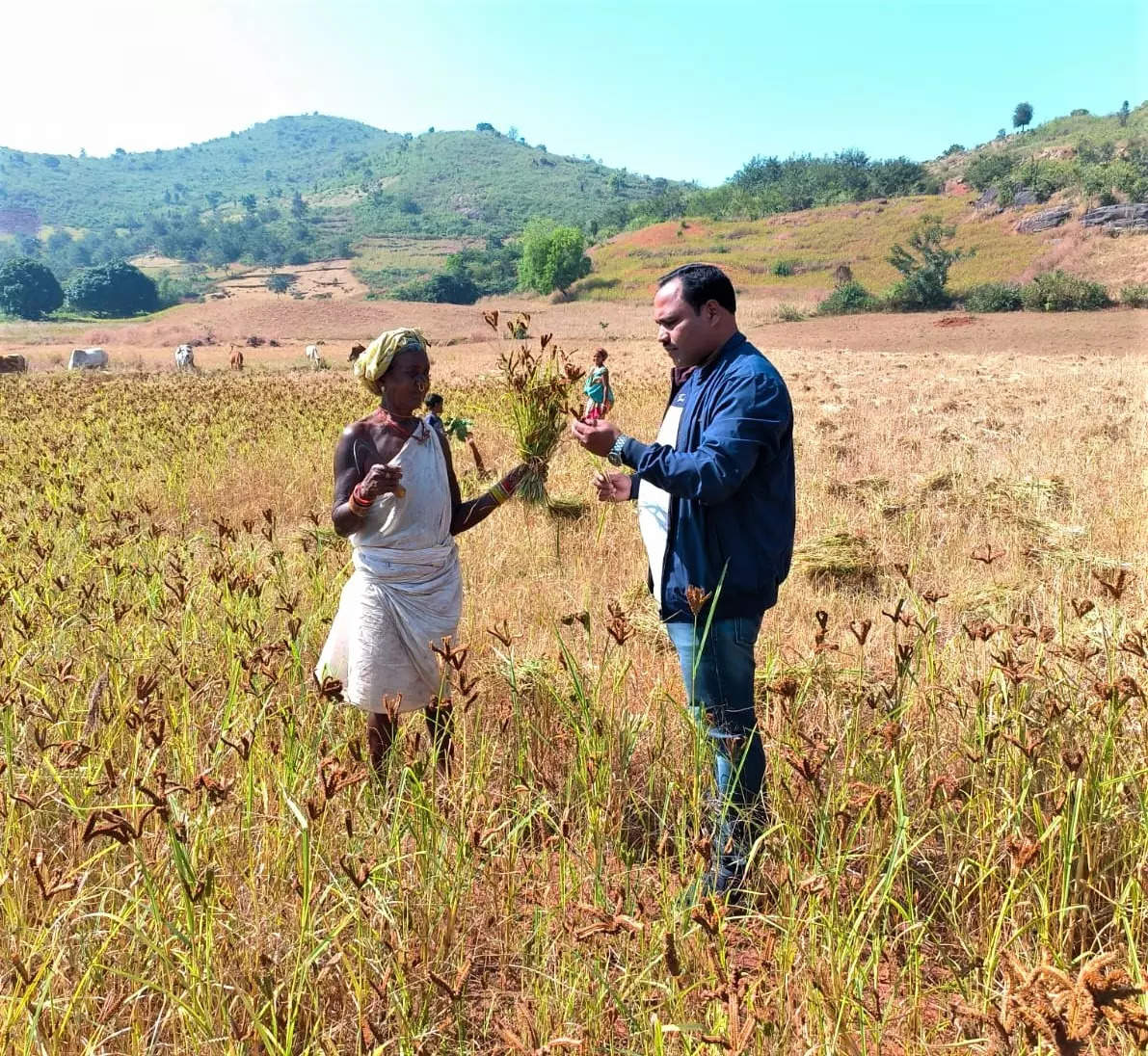Researchers find high yielding, nutrition rich ragi varieties from Koraput – Times of India

BHUBANESWAR: A group of researchers from the Central University of Odisha (CUO), Koraput and the MS Swaminathan Research Foundation’s (MSSRF) regional centre at Jeypore identified some nutritious and high yielding varieties of finger millet (Ragi) cultivated in tribal areas of Koraput district.
This study was published on December 21 in the Cereal Research Communications, a peer-reviewed international journal. The team comprising six researchers from the two institutions identified some high yielding finger millet varieties like Bhalu, Ladu, Telugu and Bada. These are better than the improved hybrid varieties, said MSSRF’s scientist Kartik Charan Lenka.
Lenka said these valuable varieties will address food and nutritional security to tribal inhabitants. “High yielding characters of these ragi varieties can be used for development of new varieties,” he added.
Debabrata Panda, an assistant professor at the department of biodiversity and conservation of natural resources, CUO, said three varieties including Telugu, Bada and Dushera showed better nutritional compositions (higher protein, carbohydrate, fiber, ash, energy content) and exceptionally rich in flavonoid and antioxidants. These superior millets might be reliable food and nutritional security crops for tribal people of the locality, he added.
More than 33 indigenous finger millet genotypes (ragi varieties) were collected from tribal pockets of Koraput to conduct study on their climate resilient traits, nutritional traits and DNA profiling. Panda did the experiment with the help of scientists from MSSRF and reported the results based on the synthesis of experiments carried out at the laboratory of the CUO and MSSRF.
“Based on the genetic analysis, these varieties can be considered as the potential genetic resources for a breeding program for the development of superior millets. The better nutritional and climate resilience characters of these varieties can be used for the development of new varieties,” he added.
Panda said these superior traditional finger millet varieties should be popularised for mass cultivation and consumption in the locality by the Millet Mission of the state government.
The researchers said valuable genetic assets are being continuously eroded due to modern farming practices. “If measures are not taken to protect the valuable genetic resources, these traditional varieties grown by the farmers are likely to be lost shortly. It is high time that we take necessary steps to conserve these valuable genetic resources of millet in their natural habitat,” said Panda.
Lenka said a strategy to promote commercial production of these indigenous millet is required to boost the local economy and create a market so as to reach larger consumers.
This study was published on December 21 in the Cereal Research Communications, a peer-reviewed international journal. The team comprising six researchers from the two institutions identified some high yielding finger millet varieties like Bhalu, Ladu, Telugu and Bada. These are better than the improved hybrid varieties, said MSSRF’s scientist Kartik Charan Lenka.
Lenka said these valuable varieties will address food and nutritional security to tribal inhabitants. “High yielding characters of these ragi varieties can be used for development of new varieties,” he added.
Debabrata Panda, an assistant professor at the department of biodiversity and conservation of natural resources, CUO, said three varieties including Telugu, Bada and Dushera showed better nutritional compositions (higher protein, carbohydrate, fiber, ash, energy content) and exceptionally rich in flavonoid and antioxidants. These superior millets might be reliable food and nutritional security crops for tribal people of the locality, he added.
More than 33 indigenous finger millet genotypes (ragi varieties) were collected from tribal pockets of Koraput to conduct study on their climate resilient traits, nutritional traits and DNA profiling. Panda did the experiment with the help of scientists from MSSRF and reported the results based on the synthesis of experiments carried out at the laboratory of the CUO and MSSRF.
“Based on the genetic analysis, these varieties can be considered as the potential genetic resources for a breeding program for the development of superior millets. The better nutritional and climate resilience characters of these varieties can be used for the development of new varieties,” he added.
Panda said these superior traditional finger millet varieties should be popularised for mass cultivation and consumption in the locality by the Millet Mission of the state government.
The researchers said valuable genetic assets are being continuously eroded due to modern farming practices. “If measures are not taken to protect the valuable genetic resources, these traditional varieties grown by the farmers are likely to be lost shortly. It is high time that we take necessary steps to conserve these valuable genetic resources of millet in their natural habitat,” said Panda.
Lenka said a strategy to promote commercial production of these indigenous millet is required to boost the local economy and create a market so as to reach larger consumers.
For all the latest Education News Click Here
For the latest news and updates, follow us on Google News.
Denial of responsibility! TheDailyCheck is an automatic aggregator around the global media. All the content are available free on Internet. We have just arranged it in one platform for educational purpose only. In each content, the hyperlink to the primary source is specified. All trademarks belong to their rightful owners, all materials to their authors. If you are the owner of the content and do not want us to publish your materials on our website, please contact us by email – [email protected] The content will be deleted within 24 hours.


